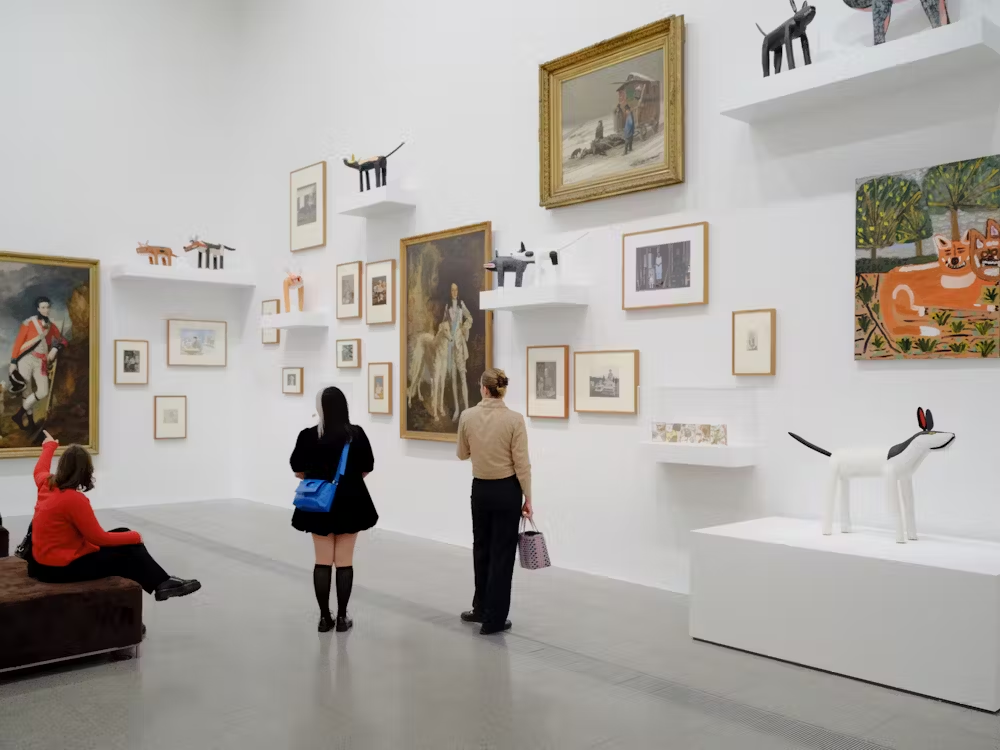
Robert Draws – NGV’s ‘Cats and Dogs’ exhibition has recently opened at the National Gallery of Victoria in Australia, drawing immediate public interest. The show attempts to explore the long-standing presence of cats and dogs in art, culture and domestic life. With works from famous names such as Dürer and Balthus, the gallery aims to appeal to a broad audience through familiar subjects and visual charm.
However, despite its playful theme and aesthetic potential, the exhibition has been met with pointed criticism from art critics and cultural commentators. Rather than celebrating the emotional bond between humans and animals through a nuanced lens, the show is said to offer little more than a surface-level parade of sentimentality. As such, questions have emerged regarding the depth of its curatorial vision and the coherence of its selected works. The criticism is not directed at the individual artworks themselves, but rather at how they are grouped and presented in relation to one another.
At the heart of the criticism lies a perceived lack of thematic clarity. Critics argue that the selection of artworks feels disjointed, and the absence of a clear narrative thread makes the exhibition appear more like a compilation of animal portraits than a meaningful investigation into their roles in art history. The exhibition includes works by historical heavyweights like Albrecht Dürer, whose detailed prints showcase technical mastery, and Balthus, known for his layered symbolism and enigmatic subjects.
Yet these masterpieces are placed alongside more contemporary or decorative works without sufficient curatorial framing to unite them. The result is a sense of thematic vagueness that many visitors find confusing rather than compelling. Art is often praised not only for aesthetic pleasure but also for its ability to provoke thought, raise questions and challenge assumptions. In this case, such expectations are considered unmet. The curation is described by some as overly reliant on the visual and emotional appeal of cats and dogs, with little effort to explore the deeper symbolic or socio-cultural meanings of these animals in visual history.
“Read about: Tacita Dean Paints the Sky: Chalk, Clouds, and Emotional Abstraction”
One main issue is the exhibition plays it too safe and avoids bold curatorial choices. Cats and dogs naturally attract attention because they appeal to a wide and emotional audience. These animals trigger strong feelings as beloved companions in everyday life and culture. But when a show depends too much on emotion, people may see it as shallow or trivial.
Curators must select artworks and also design a clear, engaging conceptual framework. Without strong framing, even powerful artworks lose meaning and connection. That challenge defines NGV’s current exhibition. Its emotional tone prevents deeper exploration of cats and dogs as complex symbols in art history. Artists often use animals to express loyalty, power, rebellion, or social class. The show includes Dürer to suggest intellectual depth and historical weight. Yet the curators fail to connect his work to a broader story. In the end, the show feels like a collection of cute images instead of a curated artistic dialogue.
“Read more: From Best Practices to Action: Rome Summit Advances Trafficking Prosecution”
Balancing popular appeal with intellectual substance is a common challenge for major galleries. NGV has previously demonstrated its ability to curate exhibitions that speak to both the public and the critic. In this case, the balance appears tilted toward accessibility at the cost of curatorial depth. Visitors drawn by the cute and relatable theme may find enjoyment in viewing charming animal portraits. Families, in particular, may appreciate the lighthearted tone. Still, those seeking insight into how these animals function as artistic devices or cultural metaphors might leave feeling disappointed. Curatorial risk-taking, although sometimes polarizing, is often what makes an exhibition memorable. The safest route does not always result in the most meaningful art experiences. Critics argue that NGV has missed an opportunity to engage audiences in more challenging and rewarding ways.
As one of Australia’s most prominent cultural institutions, NGV carries a responsibility to lead and innovate in the arts. Its exhibitions are closely watched by the national and international art community. When an exhibition like ‘Cats and Dogs’ draws widespread attention, it becomes even more important that its curatorial vision lives up to the expectations. Public institutions play a major role in shaping cultural conversations. When those institutions lean toward spectacle without substance, it can set a precedent for future exhibitions. Some fear that this might encourage a trend where emotionally resonant themes are used primarily to drive attendance rather than provoke deeper cultural reflection. While the exhibition has not been without merit, the criticism it has drawn should prompt a larger discussion about the role of curation and the importance of intellectual engagement in public art spaces.